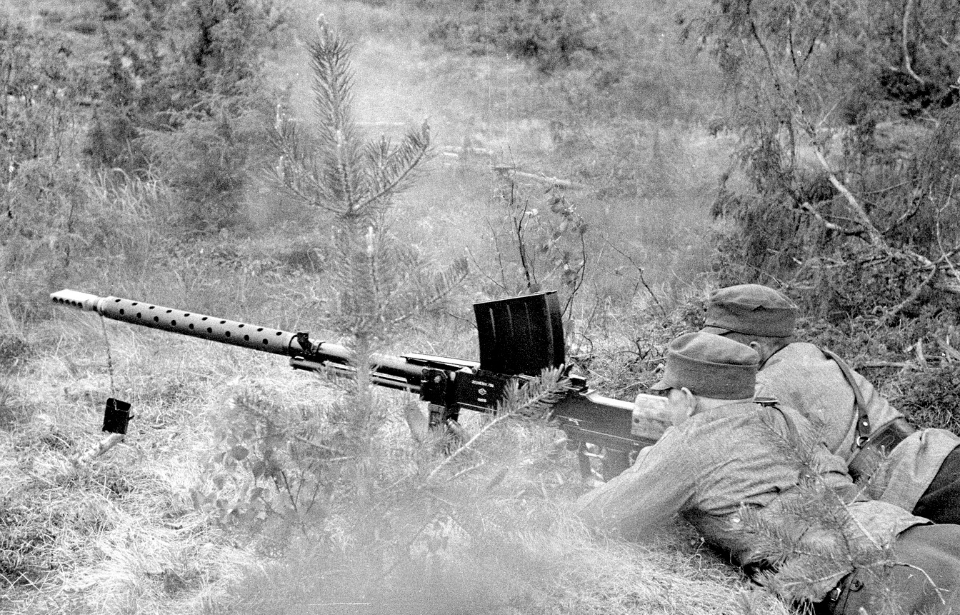When the Soviet Union invaded Finland in November 1939, its military was largely unprepared. In fact, the vast majority of men who signed up to fight ended up grabbing their own weapons to take up arms against their Soviet invaders. With little in the way of weapons – let alone reliable ones – the decision was made to produce a new 20 mm semi-automatic rifle: the Lahti L-39.
Development of the Lahti L-39
The Lahti L-39 was developed by Aimo Lahti, a Finnish weapons designer and the brains behind the country’s 20 mm rifle and 13.2 mm machine gun. The semi-automatic, gas-powered weapon hit the battlefield in 1939, and over the course of World War II saw 1,906 produced. Weighing an impressive 49.5 kg and with a length of 2,200 mm (1,300 mm of which were just the barrel), it was given the nickname “Norsupyssy” – “Elephant Gun” in English.
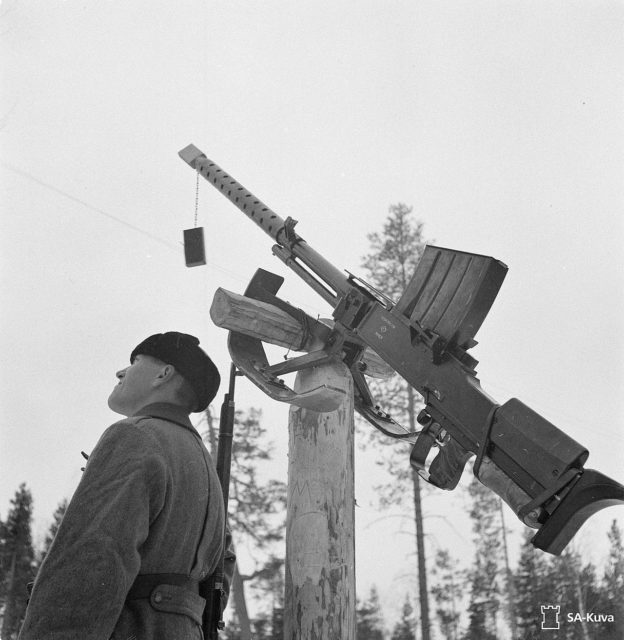
Soldiers during the Winter War liked the L-39 for its accuracy, range and ability to penetrate Soviet tank armor. It fired thirty 20×138 mmB rounds per minute, and had adjustable iron sights calibrated between 200 and 1,400 meters. The trigger and the front of the grip were protected by both a guard and a rubber buffer, and the operator was kept safe by having the spent cartridge casings ejected from the bottom of the weapon.
Due to its size, the L-39 required a dual bipod with two sets of legs that allowed for its use in any type of terrain. One was produced with spikes, to ensure operational use on hard ground, while the other featured skids for use in snowy conditions.
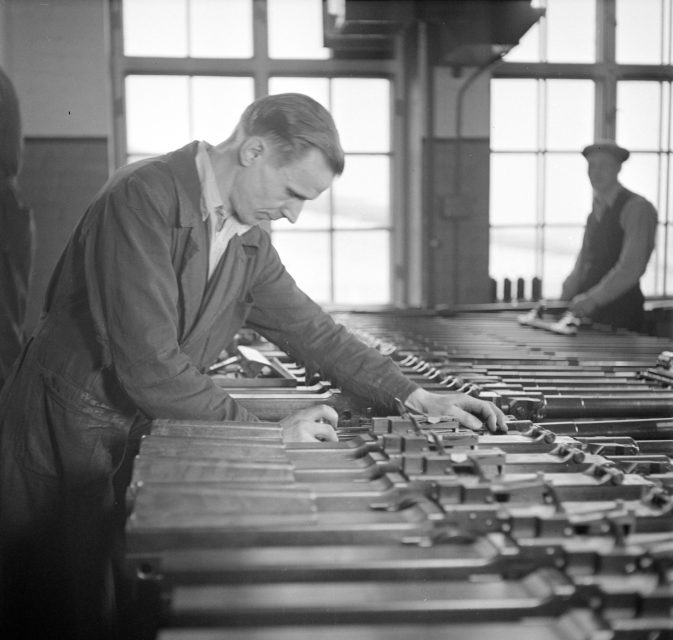
Between the end of the Winter War and the start of the Continuation War, the L-39 replaced the 13.2 mm L-35/36 machine gun mounted on the L-82 armored cars used by the 1. Divisioona armored unit.
While effective, the Lahti L-39 had its issues
Despite being an effective weapon, the Lahti L-39 had its drawbacks. Its immense weight meant it was difficult to transport. The Finnish Army had to rely on horses to tow it from place to place, and soldiers were only able to carry it once it had been stripped down. Its large size also meant it couldn’t be manned by just one individual – two were needed for it to be fully operational.
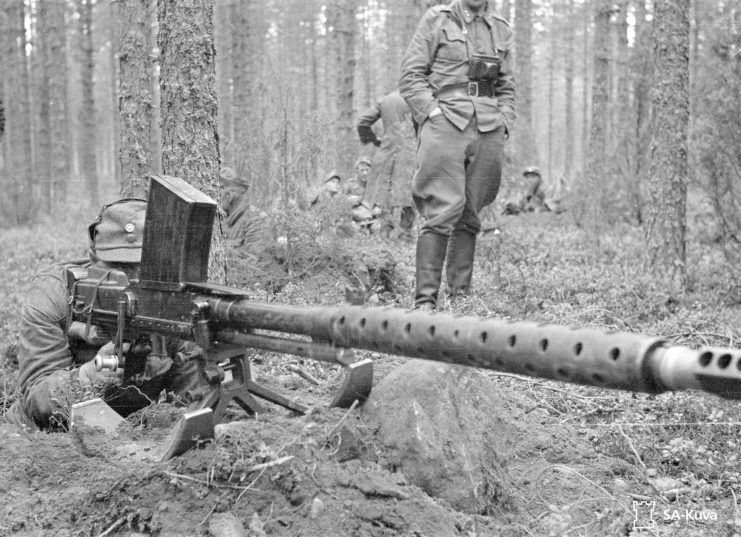
The amount of recoil was an issue, with the operator having to be braced by a padded shoulder piece. The immensity of the recoil also meant the spring was so stiff that it was impossible to cock the rifle with a traditional handle. To counter this, a rotating crank lever was installed on the right side and used to pull the bolt back.
While the L-39 was intended to be a semi-automatic weapon, its bolt locked after every shot.
Targeting snipers during the Winter War
The Soviet Invasion of Finland on November 30, 1939 was unexpected, but couldn’t have been against a more adaptable nation. Throughout the course of the Second World War, the Finns became known for their ability to adjust their tactics to fight against any enemy.
However, the country’s army lacked anti-tank weaponry, possessing only two 20 mm rifles and just a small number of 13.2 mm machine guns. While the former proved successful, the latter were unreliable and ineffective, leading to the development and use of the Lahti L-39.
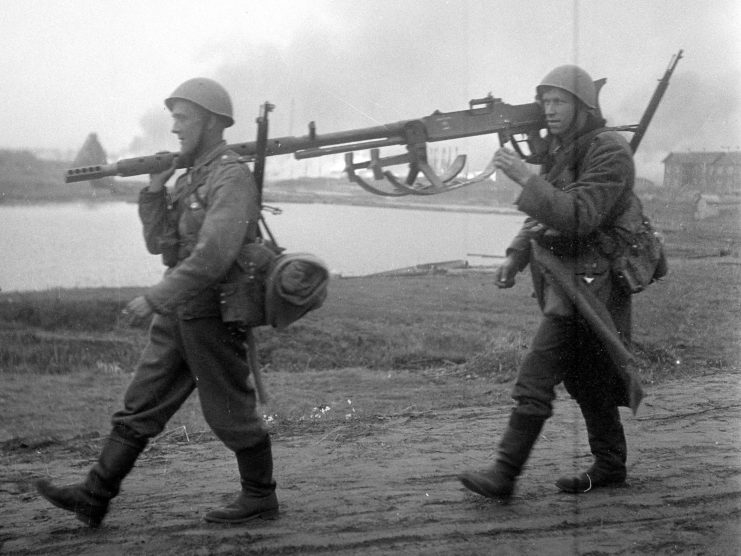
While Finland didn’t win the war and, instead, ceded its border areas to the Soviet Union under the Moscow Peace Treaty, its army was able to inflict a large number of casualties against the Soviets. This included targeting Red Army snipers through the use of the “cold Charlie” counter-sniper technique.
Using mannequins, the Finns were able to attract sniper fire, causing the enemy to essentially give away their position. Once the soldiers were confident they’d secured their target, they returned fire using the L-39.
A variant was produced for use during the Continuation War
The 1941-44 Continuation War, also known as the Second Soviet-Finnish War, saw Finland team up with Germany to fight the Soviet Union. While Finnish forces attempted to use the Lahti L-39 against the Red Army, they found it couldn’t penetrate the armor on the new T-34 and KV-1 tanks. It did, however, continue to prove useful against bunkers, personnel and long-range targets.
A small number of fully-automatic L-39s were produced for use against Soviet aircraft. Known as the L-39/44, the variant was made in small numbers and packed quite a punch.
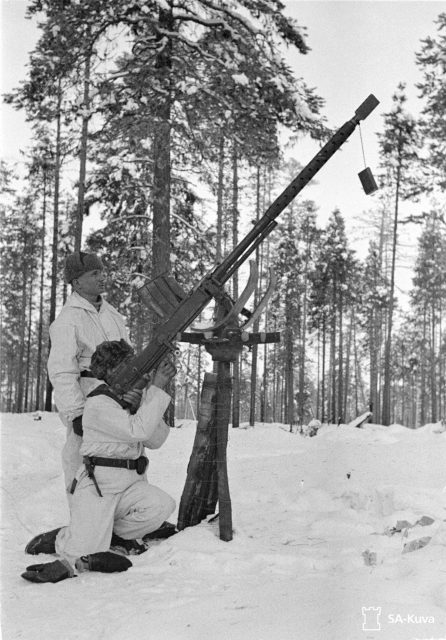
More from us: Armored Fist of Germany – Photos and Video of the Panzerfaust Anti-Tank Weapon
Following the Continuation War and the end of World War II, the Lahti L-39 continued to see use as an anti-helicopter weapon. Many of the rifles were also sold to collectors, many of whom resided in the United States. Due to the small amount produced, it is one of the most sought-after firearms from that era.
